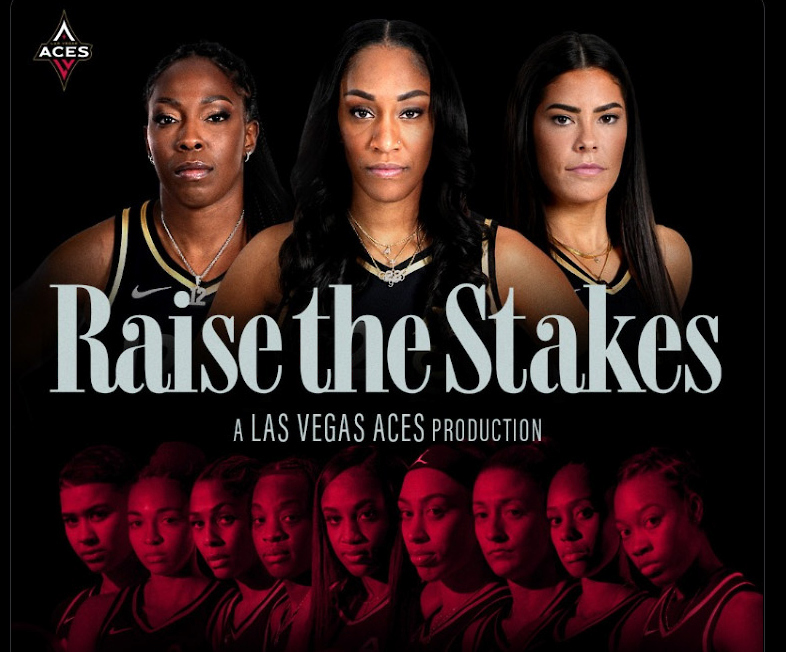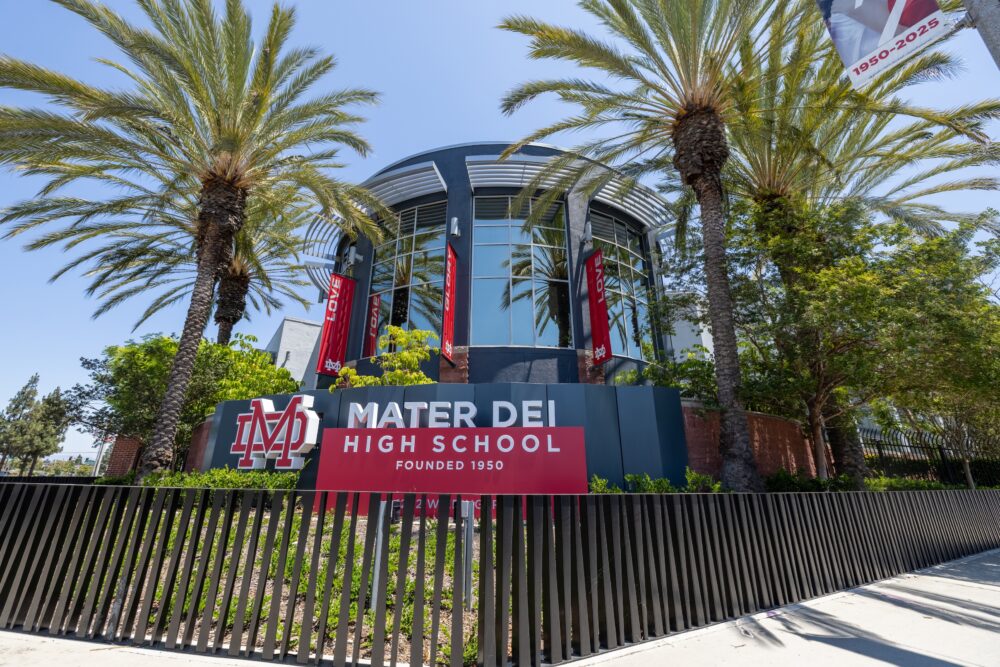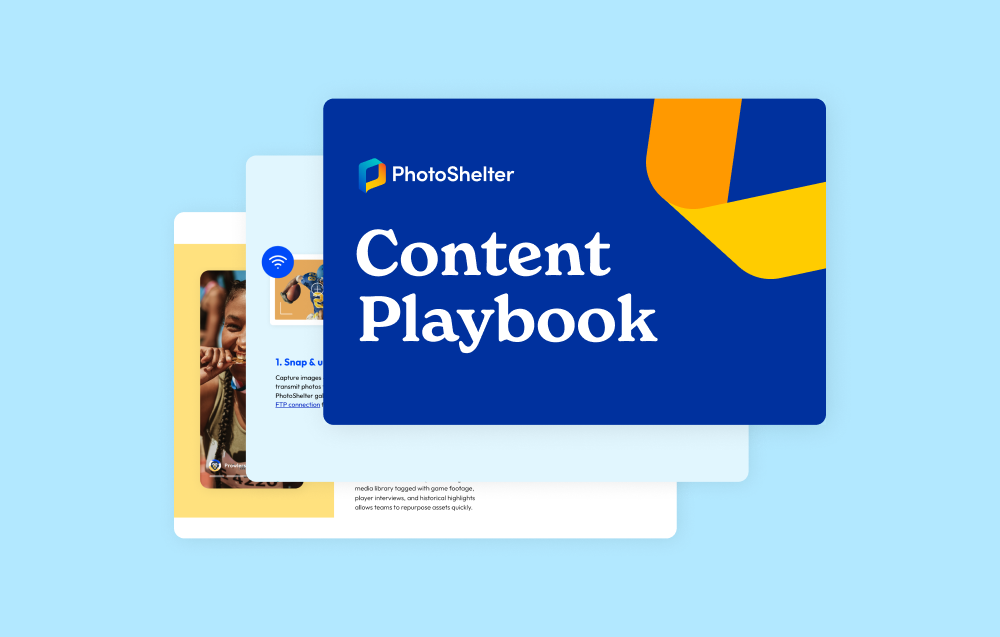As a league-reigning brand marketer with 10+ years of sports marketing experience, Deandra is a strategic, all-in leader among equals. She advocates for tech tools to help her organizational partners get work done more efficiently. She collaborates with interdepartmental teams and external partners to share The Aces’ wins far and wide. And, the entire creative marketing team constantly pushes the boundaries to create imaginative, iconic visual content that keeps The Aces ahead of the competition. Simply put, they Raise The Stakes for what strategic sports content marketing should look like.
Marketing frameworks compartmentalize the essential elements of businesses into strategic and tactical plans to help sell a product or service. One of the most reliable and popular marketing frameworks is The 5 P’s of Marketing. It breaks down the foundational elements of a business: product, place, price, promotion, and people–into pillars that marketers can build successful strategies and tactics around. Side note: This framework dates back to the 1940s and is still being used by successful professionals today!
In this article, we’ll explain how Deandra Duggans used The 5 P’s of Marketing to level up The Las Vegas Aces creative brand marketing strategy from 2021 to 2022 to sell more tickets, spark more joy, and solidify their team’s presence with fans and the media.
Watch the live-recorded session on demand below, then keep reading to learn how The Aces’ Marketing Team leveled up and won the 2022 WNBA championship title!
How The Las Vegas Aces Use The 5 P’s of Marketing To Create A Winning Brand Strategy
Deandra framed up The Aces’ marketing team’s mission perfectly to start, “Our job as marketing creatives is to drive business results–and the fundamental challenges never change. They are: selling tickets, selling merchandise, increasing our tune-in numbers, and driving up social engagement. In the age of the attention economy, there are so many distractions and we’re trying to catch attention and hold it–and that’s our most valuable asset.” Precisely.
Now, let’s review how The Las Vegas Aces used the 5 P’s of Marketing framework (and optimized along the way!) to build a brand of champions.
1. Product
The product or service your organization offers is the first foundational element to outline in this marketing framework. To keep all employees aligned with one, clear creative point of view and to keep messaging consistent across outgoing communications, all successful businesses develop an accessible brand style guide.
What about the Product goes in your brand style guide?
- Definition: Exactly what your product or service is. Doing keyword research before you commit to one to two phrases is crucial for making sure you’re aligning your product or service with the customers who are looking for it and need it.
- Function: A technical outline and thorough descriptions of your product or service(s) features and benefits
- Purpose: The problems it will solve for your target customers, and what differentiates it from other competitors—your value proposition. This brand guide should also outline and define your brand’s identity visually, including brand logos, photographic style, and packaging or merchandise, if applicable, and verbally with a voice and tone guide.
For The Las Vegas Aces, basketball is, and will always be, their star product. So, what’s the most vital metric for measuring marketing success? If you guessed ‘tickets,’ s-w-i-s-h—you got it! Growing digital audiences across platforms and increasing merchandise sales are also important objectives for the marketing team to meet, but ticket sales are the most important metric for measuring the ROI of their content marketing investments.
In Deandra’s first month with The Aces, she audited the existing creative marketing strategies, tactics, and processes thoroughly. Where they lacked structure and creativity, she developed workflow efficiencies to help all of her organizational partners work smarter and more imaginatively, not harder.
From February 2022 until the start of the season in April, Deandra explained how she and the rest of the marketing team focused on two strategic shifts to set their product up for a best-selling upcoming championship season: 1) refreshing creative assets and 2) investing in new tools to help everyone at the organization around in anticipation of the upcoming championship season. Deandra explained, “In our audit, we found that we were in need of a refresh creatively and given the lack of time, we couldn’t do a complete rebrand…Our photography drives our strategy, so we gathered media and analyzed the data to optimize our content strategy for the 2022 season.” The arena experience, the superstar athletic performances, and the team wins are also ‘products’ the marketing team highlights in content marketing to keep the sport front and center.
She continued, “We changed the angles of our portraits. We positioned our players to show off their strength, their prowess, their size–and we made sure the lighting highlighted their muscles and silhouettes. But we also gave space for them to show the duality of being human–and to show off their personalities, whether it’s a signature move or pose—and having new and diverse visuals to choose from allowed our visual storytelling to have more impact with our fans moving forward. We also noticed that there was just a lack of use for action photos and cutouts. And we wanted to make sure that you know those were prioritized because they are basketball players, so we didn’t want every image or ad we have of them to just be a posed portrait with a basketball. We wanted to show them in their natural element because they are world-class basketball players! That’s a very simple and obvious pivot, but it was necessary… We brought in more ‘Vegas’-style elements and this look took on a more sophisticated shape as the season continued, and it was used across all platforms. These images were used in out-of-home ads, digital ads, in email, on social media, and so forth–and it really gave us a consistent brand look throughout the season.”
The audit also highlighted the workflow optimizations they needed to make in order to see a higher ROI (or ROA) on their content marketing efforts.
Centralizing The Aces’ content archive–over 18,000 assets and counting!–in a DAM like PhotoShelter allows The Aces’ internal and external partners to access and use the newest, on-brand content and unlock the brand’s promotional potential at any given moment.
What was their DAM strategy before Deandra joined the team? They had a one-person, human-Rolodex, Kris Lumague, and they relied on his memory to recall and fulfill any visual request. They lacked the necessary infrastructure and tools to carry out an elevated marketing strategy, and the audit brought all of the key workflow inefficiencies to light. “While those things don’t seem like they have anything to do with creative strategy, they really do because we were wasting key resources like time and staff. We found that spending those valuable resources on small tactical things meant we had less time to be creative and strategic, and that just didn’t work in our favor,” she said.
Deandra was familiar with the PhotoShelter platform after having used it for years at The Baltimore Ravens, “I understood how it worked and how it allowed us to collaborate as an organization, so we were able to immediately provide access to all The Aces’ content to everyone who needed it for their use, whether it was for partnerships proposals, advertising, sharing with the press or anything,” she said.
Watch Deandra walk through the content production workflow that took the brand marketing strategy to new heights in this 3-minute clip:
Digital asset management (DAM) plays a crucial role in product marketing, ensuring that all product-related digital assets are up-to-date, easily accessible, and consistent across all marketing channels. The PhotoShelter for Brands DAM is also equipped with advanced artificial intelligence tools that scan, recognize, and automatically tag images with SKU codes, brand logos, and textual information on product images. With a centralized DAM system, businesses can ensure that their product images, videos, and other digital assets are instantly available for everyone in their organization to use to market the product effectively.
2. Price
Creating and defining ideal customer personas help businesses establish the right way to price their product for the market. Think of it this way: If you want a higher return on your brand’s marketing investments, it’s crucial to set the right price for your product or services so your brand marketing materials attract and retain the right customers—the customers who need and can afford your product.
During the brand audit, one recurring sentiment The Aces received from fan surveys critiqued their inconsistent email communication. With this feedback in mind, Deandra developed a robust, consistent email marketing campaign strategy to keep fans informed, involved—and ultimately, to sell more tickets at an affordable price.
Deandra invested in Adobe Marketo Engage, a central marketing automation software tool to build, set up, send, and analyze the performance of all The Aces’ emails. Then, she scrubbed, pooled, and filtered audience data stored in their CRM tool–and built out all the audience segments to send targeted pre-and-post-game emails to maximize the time they have fans’ attention. After seeing positive results from this strategic pivot and Marketo implementation, she set up additional surveys to ask fans where and how they preferred to receive communications. This allowed them to more precisely target fans on the right platform, at the right time to inspire them to transact. Plus, asking fans to share optional information about their annual earnings helped The Aces price tickets more effectively to reach their sales goals while also keeping the fan experience accessible and budget-friendly.
DAM can help businesses make their products cost-accessible by enabling them to analyze their competitors’ pricing strategies and identify pricing trends in the market. With a DAM system, businesses can access pricing-related data, including product images, competitor pricing information, and other relevant data.
3. Promotion
The third ‘P’ is Promotion—and it refers to the tactics marketing teams use to build awareness and attract audiences to buy their product or invest in their service(s). However, while promotion is one of the marketing team’s main responsibilities, it’s a shared strategic goal for advertising, sales, public relations, fundraising, and partnerships teams too.
If brands want to be first to go viral in the attention economy (as Deandra called it), giving everyone in your organization instant access to an easily searchable DAM Library of your brand’s best content is crucial to unlocking the potential of brand promotion.
Deandra previously mentioned that audience attention was The Aces’ best asset, so measuring audience engagement is another great way to gauge their success of product marketing. How do they capture audience attention and turn fans into promoters? By consistently sharing all angles of what makes a star athlete a winning, team player which inspires fans to buy into the team dream The Aces are selling.
Deandra expressed disappointment about how the limited broadcast and streaming coverage of WNBA games, and specifically their team’s EPIC game introductions, makes the Sin City experience inaccessible to fans and potential fans that can’t get to a live game. She said, “Some awesome moments aren’t always picked up on broadcast, and our game introductions are really amazing! We blow it off the water and make everything kind of really Vegas-centric, because that’s how you really sell a ticket! That’s how you sell the full experience. If people can actually see what that looks like and feel like, they’ll want to experience it in person. Sometimes the only way to really do that is through our own channels.”
All of The Las Vegas Aces’ promotional content lives in the PhotoShelter for Brands digital asset management platform–over 18,000 assets and counting! And since they’ve started building their archive, Deandra said interdepartmental access to content for uploading, downloading, editing, or sharing content has never been easier. PhotoShelter for Brands is critical to unlocking the potential of The Aces’ new and powerful creative promotional assets.
Wonder how they choose the best visuals to highlight their brand from an archive of nearly 20,000 assets?
Deandra explains:
“Photography drives a lot of our content and our creative, so it’s our second biggest asset. The third biggest asset is the permission we’re giving ourselves to just be ourselves, which allows our players to show up as themselves and play better. That permission has been really helpful in redirecting the way we develop creative…It allows us to create content to capture people’s attention, spark joy, and inspire them to transact without it being forced. That can be encouraging them to purchase a ticket, encouraging them to purchase a piece of merchandise, or just simply encouraging them to like, share, or comment on a post. We try to strategically make sure that our content is captivating and encourages fans to transact.”
Then, she shared exactly how they use their leveled-up brand imagery to keep basketball at the forefront of the content posted across all of their digital platforms:
“Basketball is our priority, so if you look at our feeds–it’s the main focus. We make sure that we show the game in creative ways, but we also focus on frequency and consistency. It’s all about habit stacking. If you look at our grid or the cadence of our digital ads, there’s consistency and frequency. We believe in saying: ‘Do the boring things consistently,’ because they create habits and then those habits become easy to manage. Our social grids follow a structure leading up to game day, through game day, and after each game. Habit stacking helps with organization and time management, but it also helps keep our fans engaged. Usually, we’ll start with shots from our daily practice, then we’ll share images from the game day shoot. The players love fashion, so we’ll shoot some outfits during the players’ arrivals and get a few clips from the pregame practice. After that, we share in-game content and post-game content, which includes photos and video highlights, then it’s the ‘Up Next’ game posts. Then we go right back to the beginning and start with sharing the next day’s practice photos. The team got in the habit of posting according to this format, so they don’t have to think about the types of assets they need to market key moments when game day comes around.”
Want to see the images The Aces are adding to their archive every day?
4. Place
‘Place,’ in the 5 P’s framework we are covering here, refers to the digital distribution channels brands use to market their product or service to customers. With a DAM like PhotoShelter that integrates into digital content creation tools like Adobe Creative Cloud products, Canva, or Slate, and social posting platforms like Hootsuite, businesses can upload, crop, and organize assets by the distribution channels they’re optimized to be posted on. Plus, brands that work in the live event space like The Aces, can instantly share content with key internal and external partners and post content in real time, with PhotoShelter’s martech integrations.
In general, centralizing The Aces branded content library in PhotoShelter’s secure digital asset management platform helps them stay organized, so they can manage their organization’s robust content distribution strategy.
How do they manage content on game day? Deandra broke down how visuals go from their photographer’s camera to PhotoShelter and into fans’ social media feeds in seconds.
“On any given game day, we have ~3 creatives that are capturing content specifically for us…They get thousands of pieces of content for game day and 20% of what they capture is actually used on game day and in post-game day content. The rest of that content is sent to PhotoShelter to be used throughout the season and it’s been it’s great for us. Having everything saved on external hard drives wasn’t the safest method, so bringing PhotoShelter in as a central hub really helped us.”
Another way The Aces creatively think about ‘Place’ as a marketing team is by using their physical location to their advantage. Deandra said they lean into the Vegas city aspect to drive their messaging, creative, and in-game experience.
She said, “First off, Vegas is the entertainment capital of the world. That’s a positive. It’s a growing sports town—with the WNBA, the NFL, the NHL, minor league baseball and there are reports of Major League Baseball and the NBA coming here. Plus, the city also hosts several national sporting events like The Super Bowl, NCAA Final Four, and Pro Bowl. Basically, everything is coming to Vegas if it’s not already here. It’s also seen as a party town, which is a positive and negative because it means that there are several options for visitors to experience. When they come to town, we want to make sure that we are seen as one of the top options for them, and for people who are already here. People actually do live here. While Vegas is a tourist attraction, people are born and raised in this city (and in Nevada) who like sports and are looking for new things to do…Lastly, another positive that can also be a negative is that The Aces play during a season when no other major league team competes. We have the attention of people who have an appetite for sports because there are no other sporting events going on in town beyond boxing events.”
Organizing their assets in their artificial-intelligence-enabled DAM by event, moment, or campaign helps The Aces seamlessly search and select the perfect visual content to showcase their city pride.
5. People
Lastly, and most importantly, the most recently added ‘P’ stands for ‘People’! This refers to the team members who sell your business—your sales representatives, customer success managers, and marketing team members.
How does digital asset management relate to this last part of The 5 P’s of Marketing?
With a robust DAM platform like PhotoShelter, businesses can analyze user behavior to find out what the most popular search queries are, what the most downloaded content is in a specific time period and other relevant data that can help marketers develop stronger strategies to increase the value and impact of their assets. Calculating the return on the investment of your brand’s creative marketing assets will determine the strengths and weaknesses of your organization’s selling teams.
Three essential qualities your customer-facing teams (sales, marketing, and customer service) must exude to ensure a positive customer experience: proactivity, compassion, and inquisitiveness. The teams that sell the product to customers should also be knowledgeable about the product’s functionality and benefit to the customer.
For The Aces, their superstar athletes are the top-selling spokespeople for the brand—since their performance is the product they market to sell tickets. So, showcasing the full spectrum of who the players are as people in their content creates a deeper story for fans to connect with. Deandra said, “We want to make sure we tell the stories of our players on and off the court…Everyone has a story of growing up, everyone has things that drive them, so we really wanted to search deep and find those stories within our players.”
However, the creative team members are really the MVPs who document and elevate the brand through striking visual storytelling every day.
Deandra praised the way The Aces’ Social Media and Content Director, Kris Lumague, dynamically frames the players and the game. “He just captures things amazingly. Here’s an example of two images from the same game and they both have a purpose. One shows Kelsey driving the ball around an opponent, and the other shows Kelsey watching the play develop because she’s a guard and she’s waiting for her movement–communicating with her eyes,” she said.
Making Sense of Marketing Strategies: More Art or Science?
A divisive question to ask any marketer: Is marketing an art or a science?
The real answer is complex and nuanced, but the short answer is: marketing is both an art and a science!
Since the 1940s, marketing has evolved from a utilitarian business function in service of post-war consumerism into a professional industry and field of practice that’s been refined by the scientific process over time. Creative thinkers hypothesize and create visual and physical experiences for audiences to interact with. Then marketers use the scientific process to test whether creative production is worth the effort–conducting split tests to gather data and deduce insights on audience behavior.
By providing a centralized location for all digital assets, businesses can ensure that their marketing campaigns are consistent, up-to-date, and effective in reaching their target market. DAM enables businesses to analyze their competitors’ pricing strategies, identify pricing trends in the market, and create digital assets that are specific to each distribution channel. With a DAM system, businesses can take their marketing strategies to the next level and achieve greater success in today’s digital world.
As a company that empowers visual storytellers to create and share effective, engaging content marketing experiences, we understand the struggle to measure your creative return on investment, but it’s actually part science, part art, and part philosophy. We hope that by sharing real-life advice, best practices, and insider anecdotes from your creative brand peers and idols, you’ll test new strategies along the way and learn how to optimize your team’s creative output by investing in the tools you need to succeed!
Tell us more about your brand’s visual content strategy and let’s unlock its full potential together.




